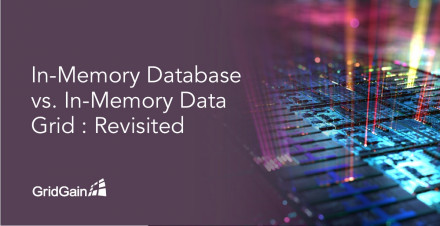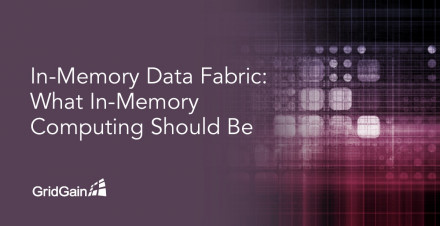GridGain Blog
MySQL is a popular open-source relational database management system (RDBMS) that has certain limitations when it comes to Big Data analytics. In this context, this post will delve into five key MySQL limitations that can be addressed by taking a modern approach to the data architecture.
1. Delivering Hot Data
In large Big Data analytics applications, the data cache stored in RAM can grow very…
Held on June 6, 2023, this year's Ignite Summit showcased the breadth and flexibility that make Apache Ignite a foundational technology for many demanding data use cases. Presenters represented a wide range of organizations, from financial services and telecommunications to programming language development.
Organized by GridGain and the Apache Ignite community, Ignite Summits…
Why is it necessary to distribute data?
As systems that require data storage and processing evolve, they often reach a point where either the amount of data exceeds the storage capacity, or the workload surpasses the capabilities of a single server.
In such situations, there are two useful data distribution solutions: data sharding and migrating to a distributed database. Both…
This tutorial walks you through the process of creating a Spring Cloud-based RESTful web service that uses Apache Ignite as a high-performance, in-memory database. The service is a containerized application that uses HashiCorp Consul for service discovery and interacts with an Apache Ignite cluster via Spring Data repository abstraction. For containerization, we use Docker.
Apache® Ignite™ is…
Apache Ignite has the ability to scale horizontally, allowing you to handle the data generated by your applications and services. When your Apache Ignite cluster is using excessive memory, you can utilize horizontal scaling, which is one of the fundamental architectural capabilities of Ignite. While the common advice is to "throw more resources into the cluster," it is often not practical or…
There are two significant categories in in-memory computing: In-Memory Database and In-Memory Data Grids. This post aims to present a concise version of thoughts on this topic, with insights gained from a recent analyst call aiding in organizing the information.
Nomenclature of In-Memory Database vs In-Memory Data Grid
Let's start by clarifying the terminology and buzzwords. The term "In-…
In this post, we will be discussing the GridGain Nebula managed service offering for Apache Ignite, available on the GridGain portal. The main benefits of GridGain Nebula are that it simplifies cloud provisioning and provides managed service support.
What is Apache Ignite?
Before we begin, let’s take a look at Apache Ignite. At a very high level, Apache Ignite and GridGain are both in-memory…
Businesses today are increasingly complex leading to slow performance which negatively impacts customer experiences, productivity, and ultimately revenue. An in-memory data fabric addresses data complexity head-on.
Companies today are facing a significant problem – their reliance on disk-based data stores are slowing down performance and costing them valuable time and money. Enter GridGain’s…
The Apache Ignite native persistence storage engine follows a classic database approach based on the ARIES architecture. However, the Ignite developers needed to make some adjustments to the architecture in order to improve development speed and support memory-only storage.
In this blog, I will provide an overview of the Ignite native persistence storage engine and discuss the tradeoffs that…
The Apache Ignite community is maintained by dedicated volunteers who manage a highly informative and well-designed website. This website is regularly updated with the latest news and information about the open-source project. A section of this content, found on the GridGain blog, provides an overview of Apache Ignite's basic concepts, facts, tips, and tricks. The goal of this blog post is to…
















